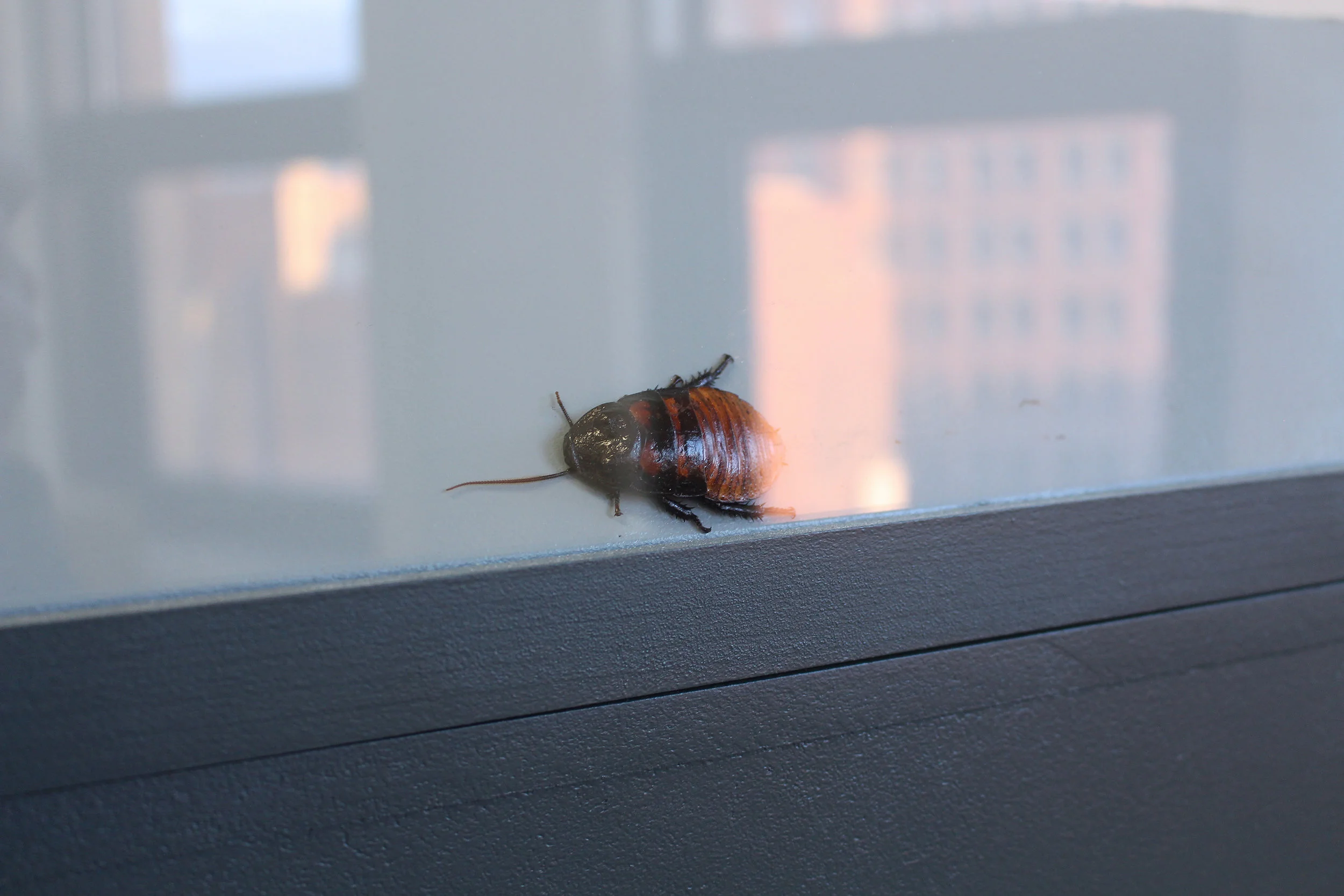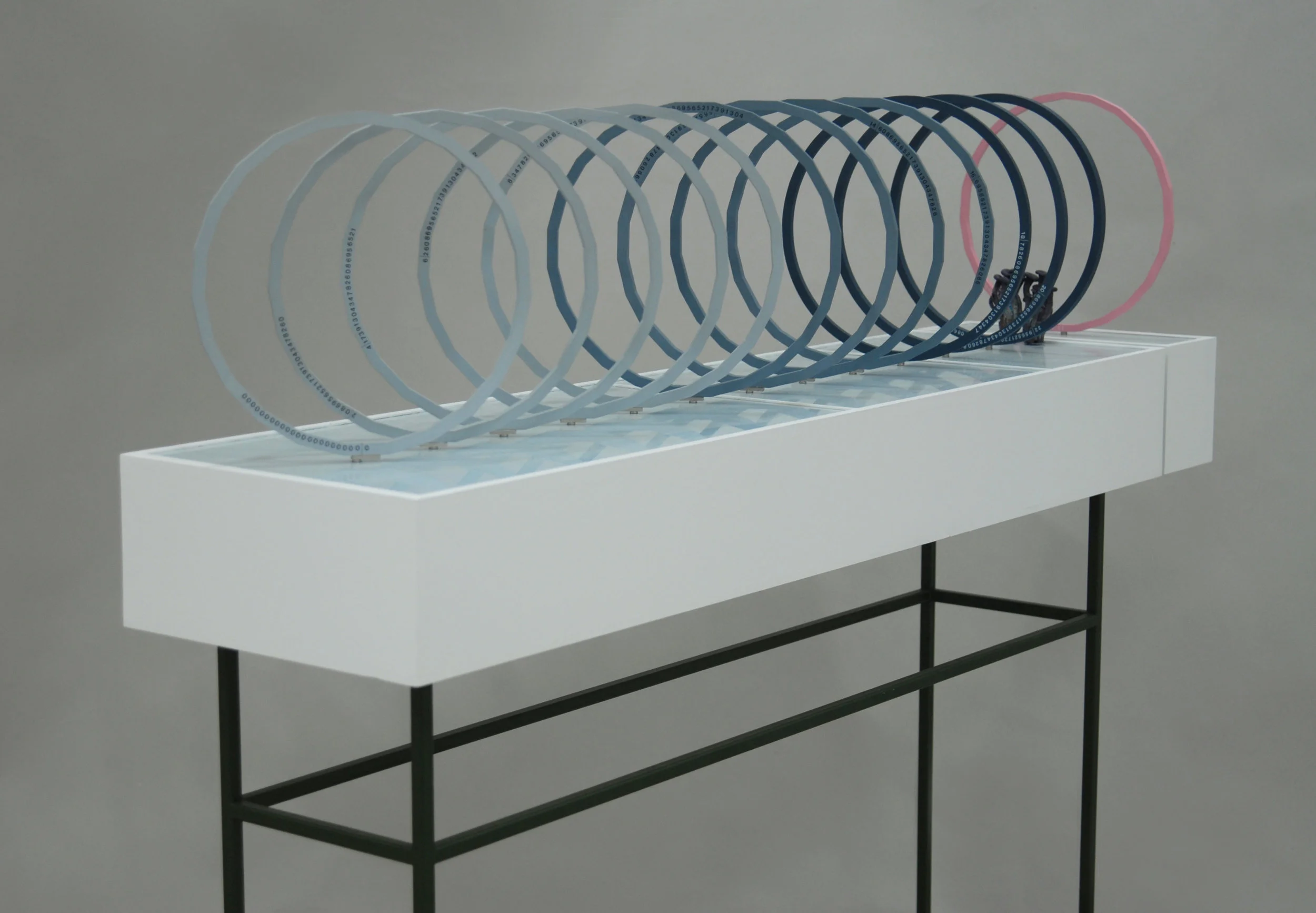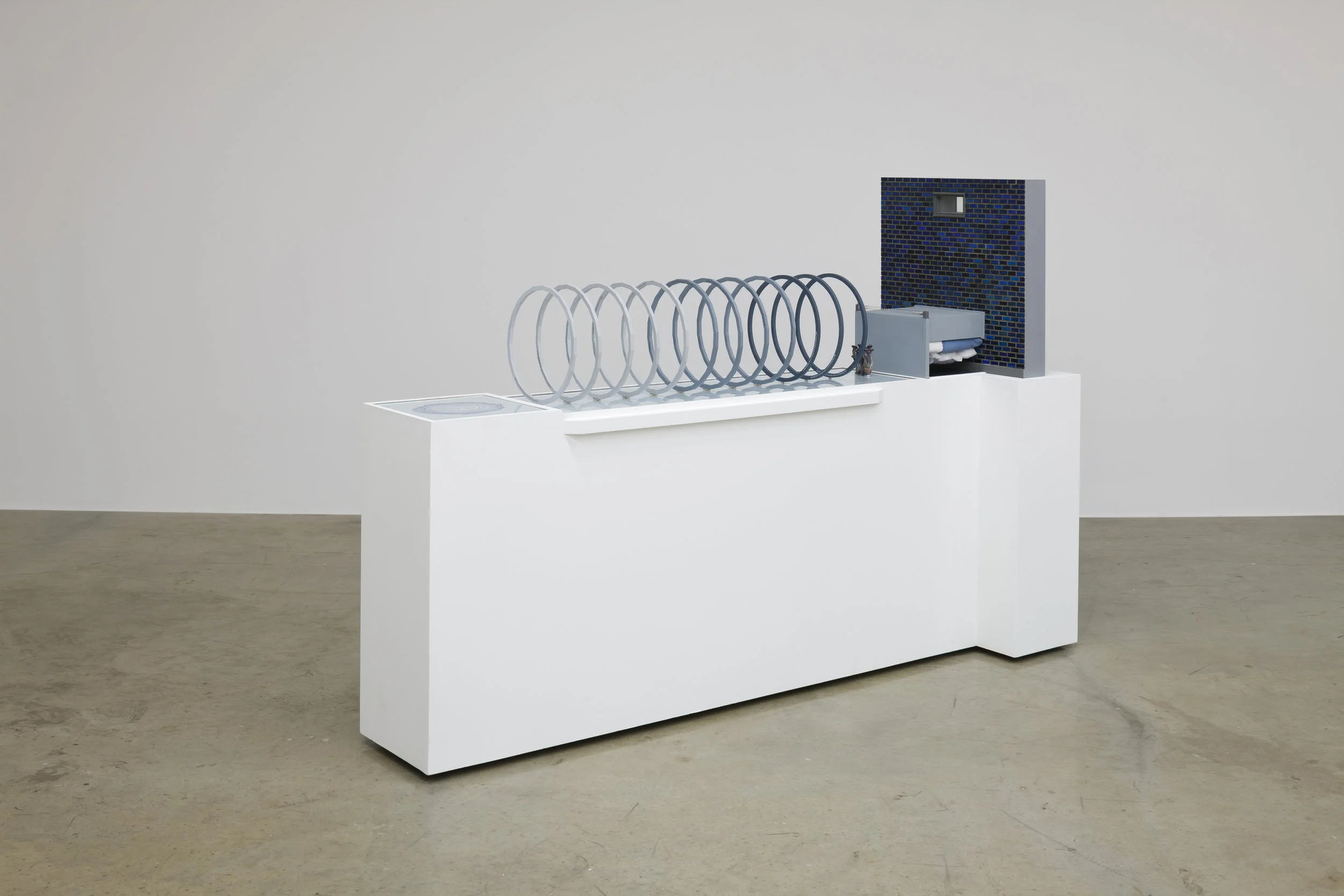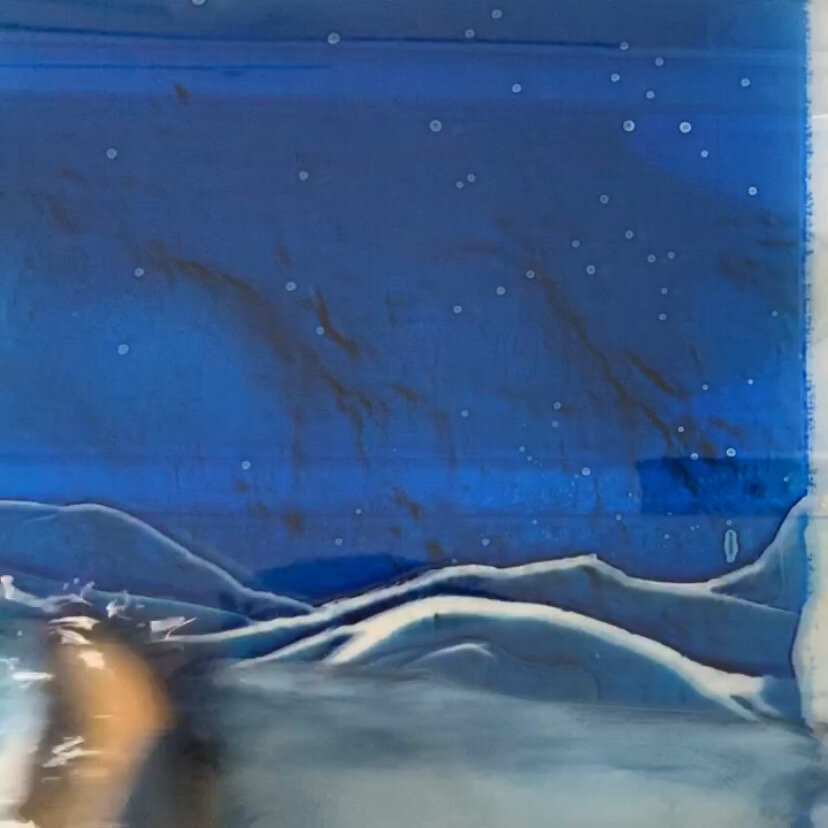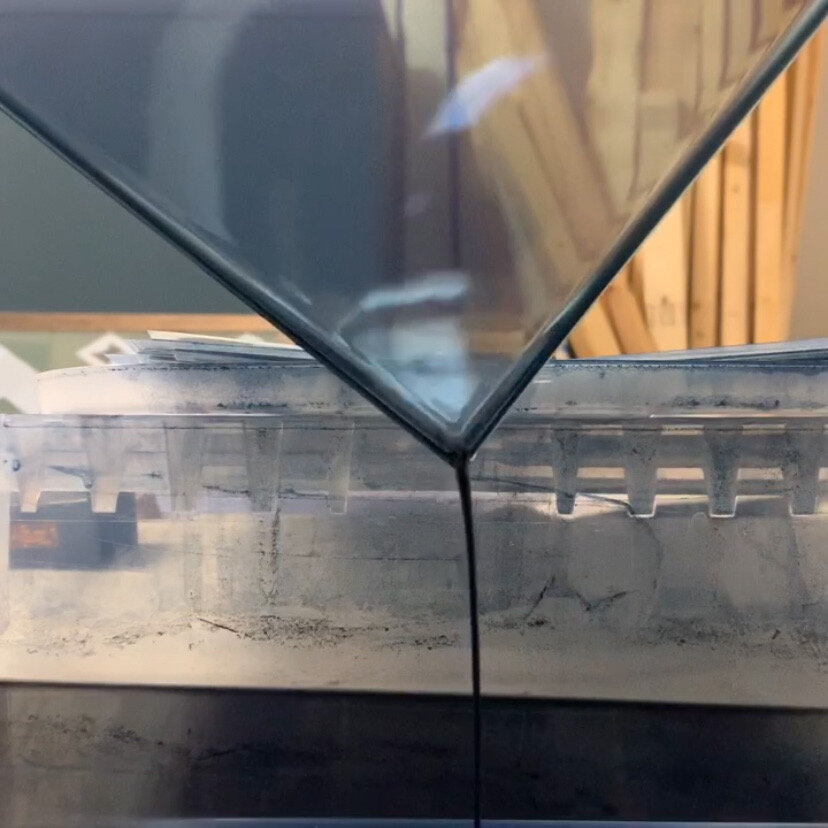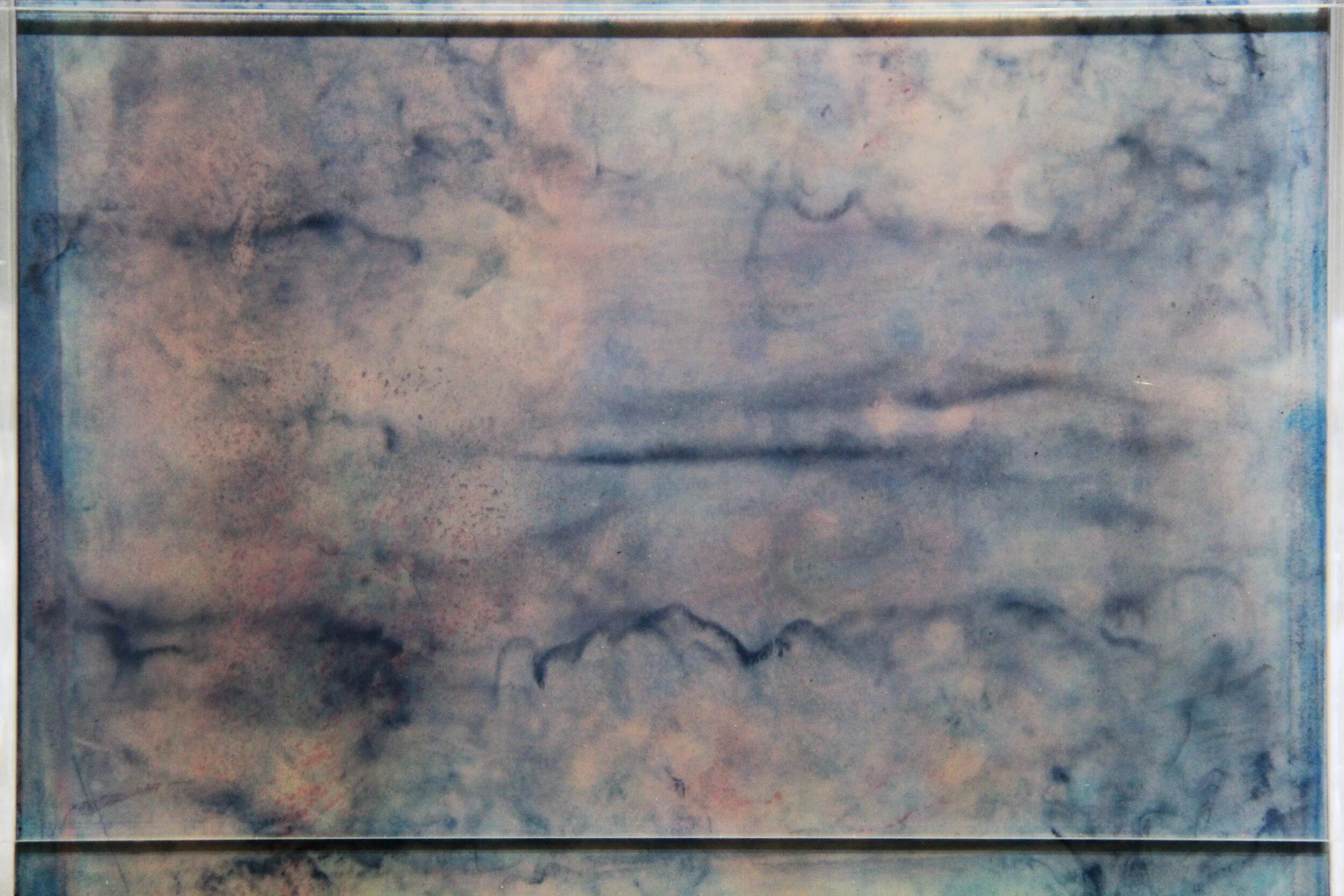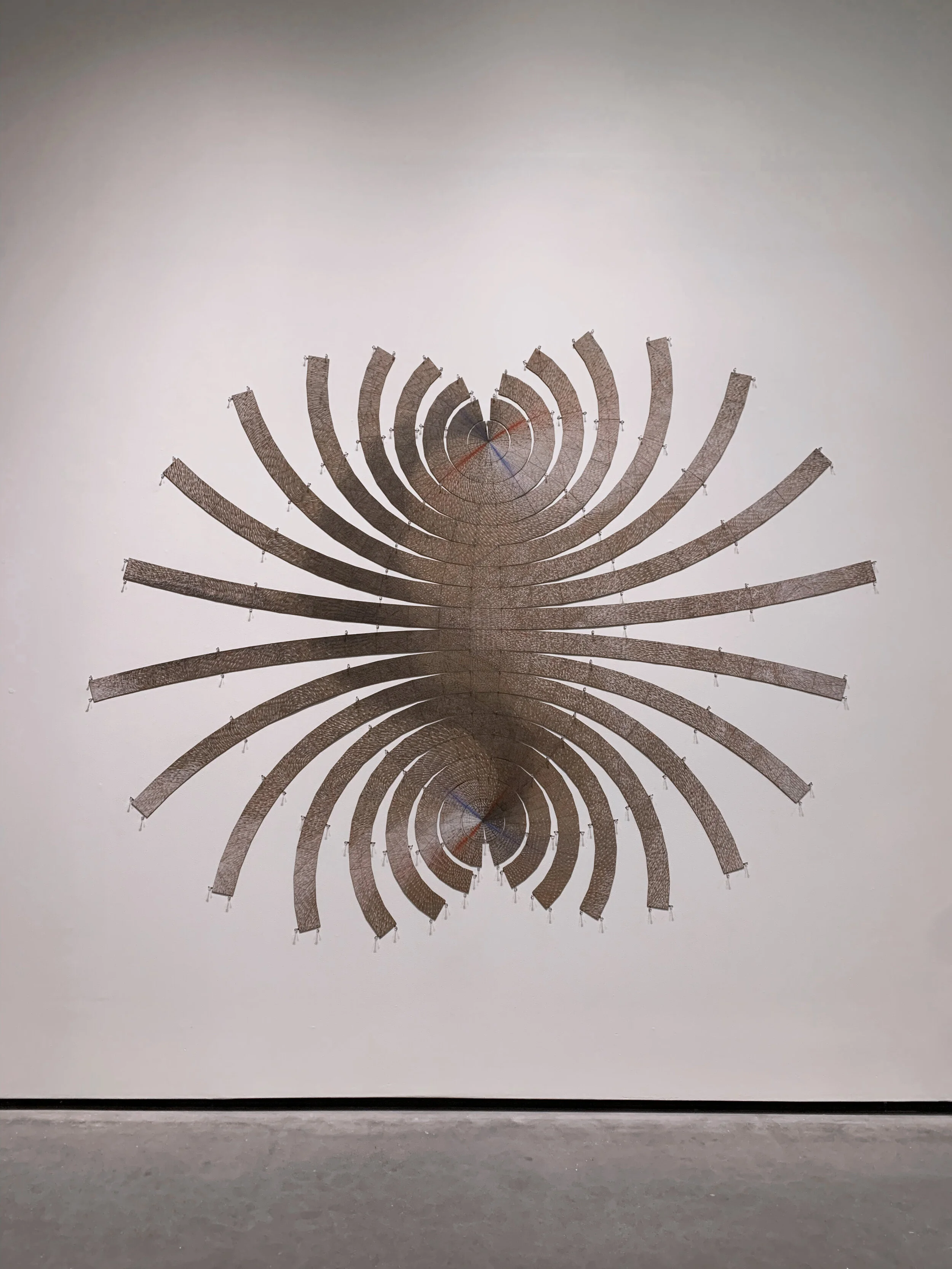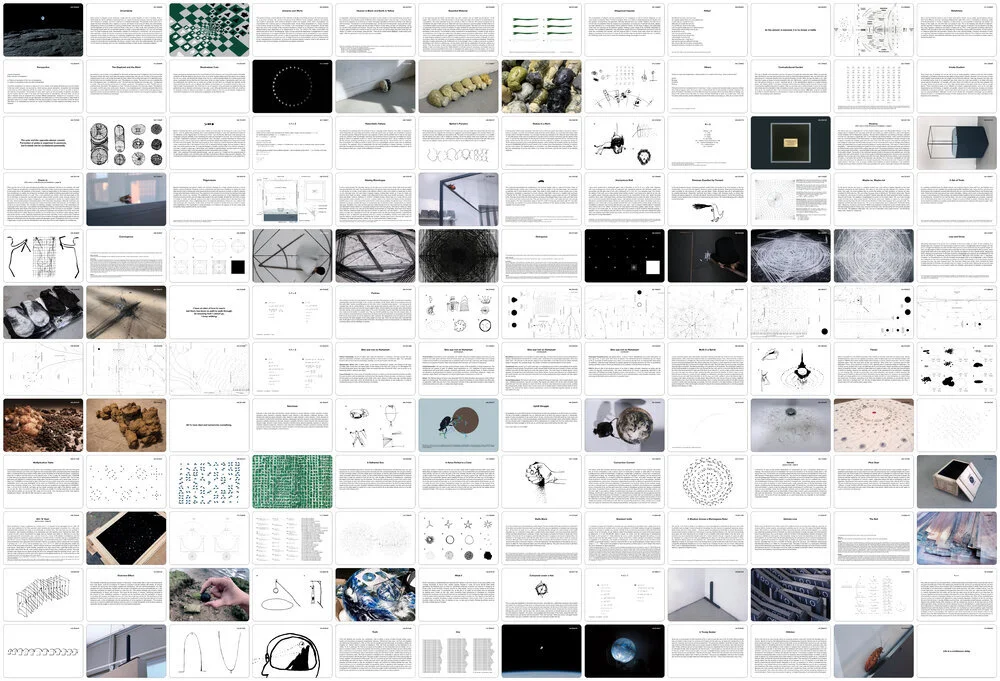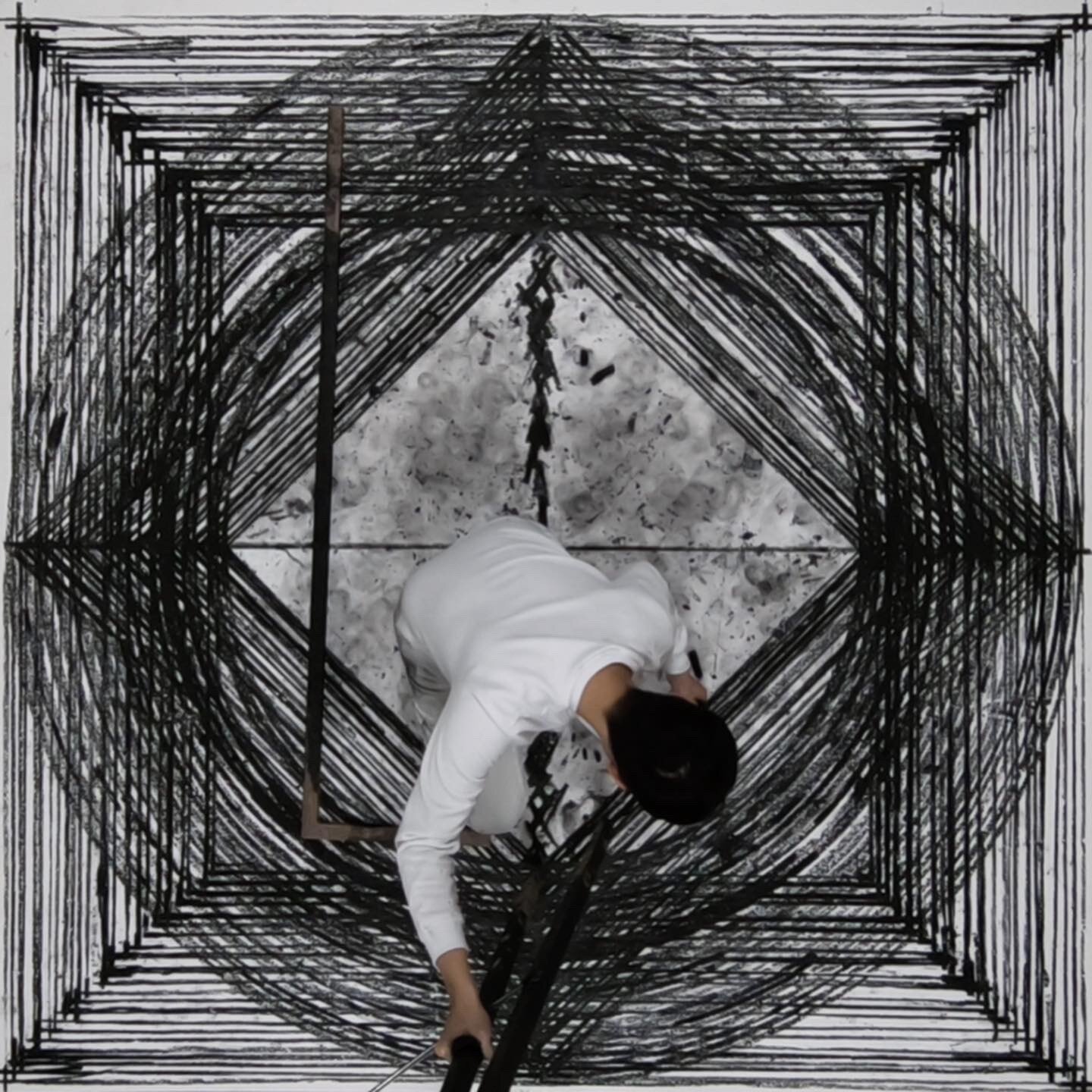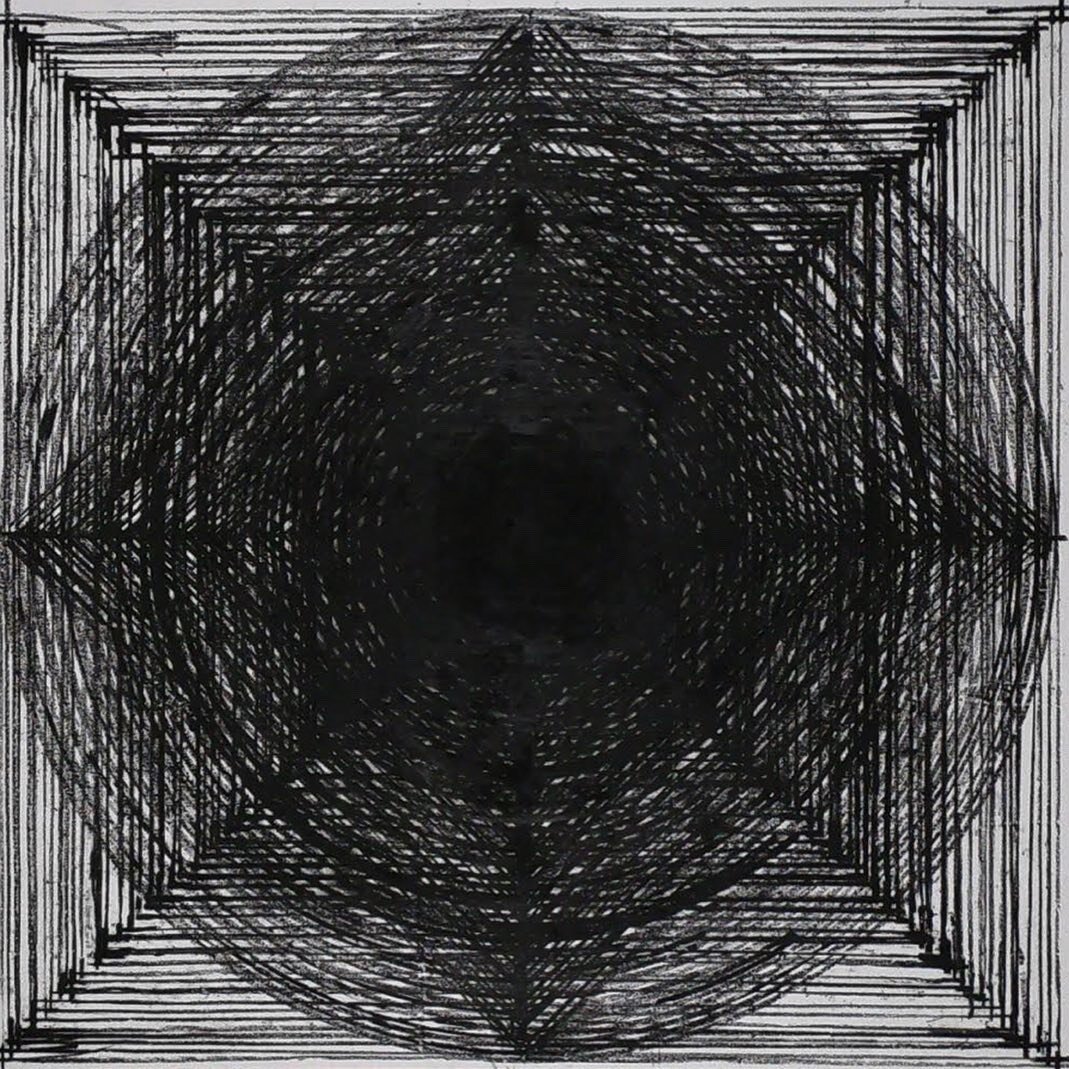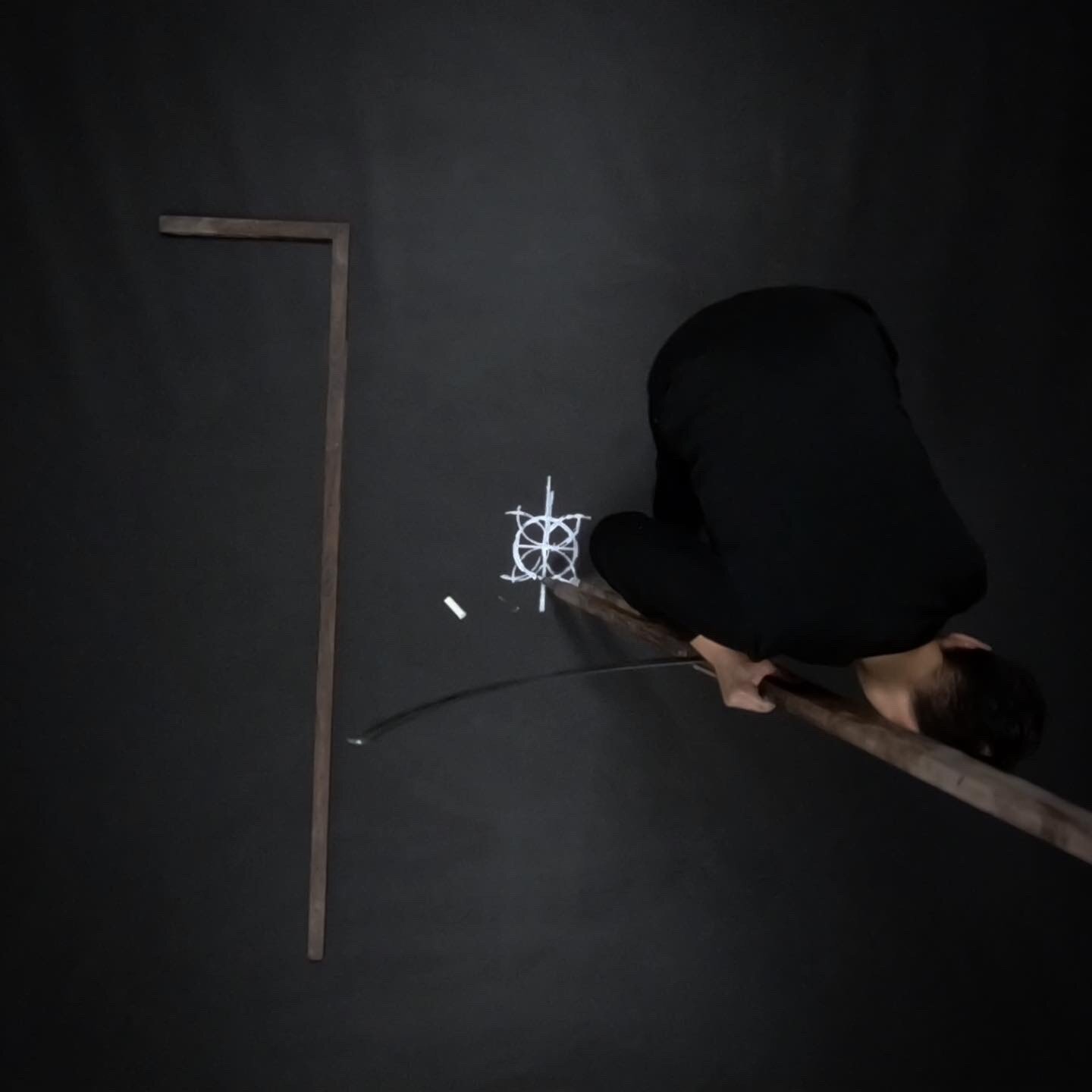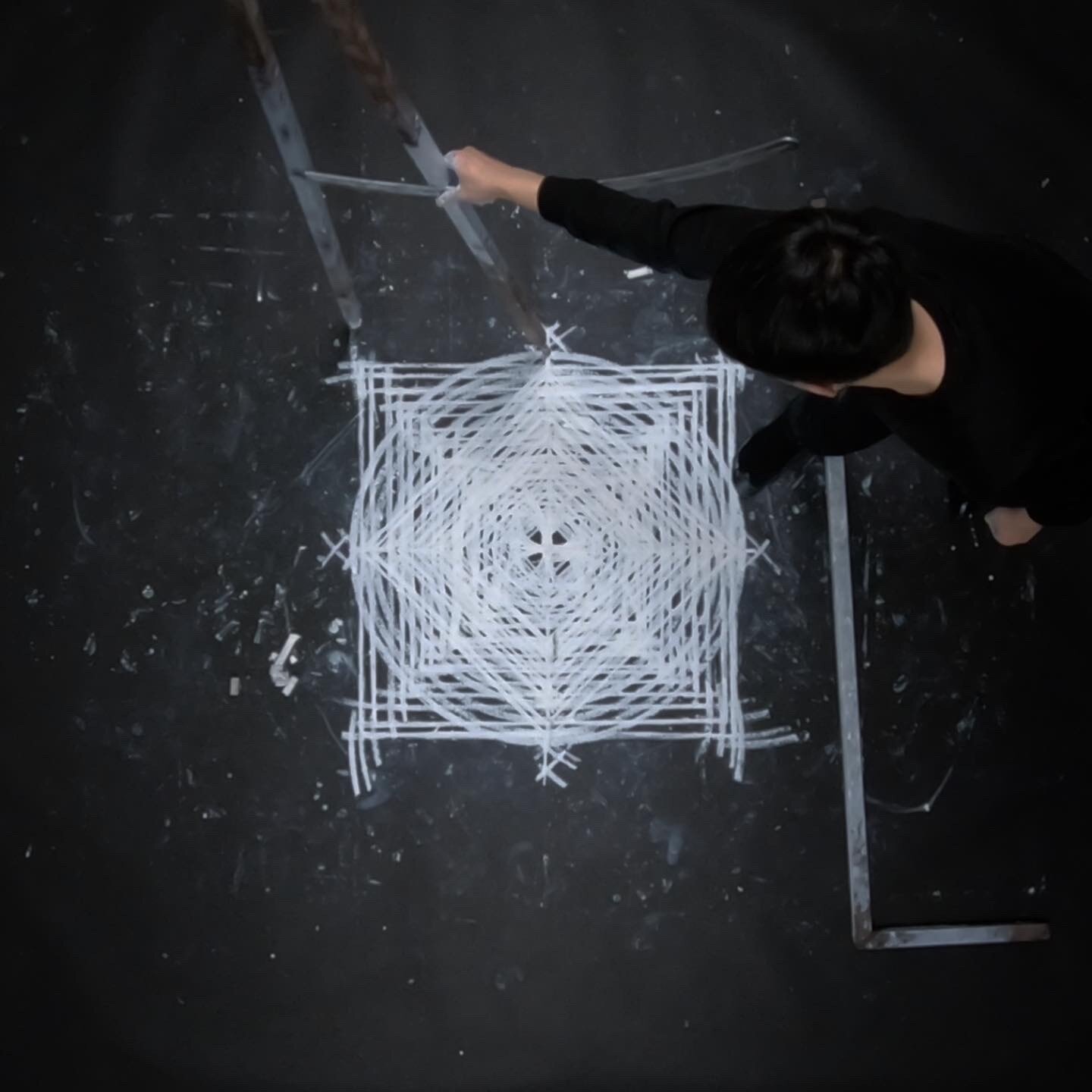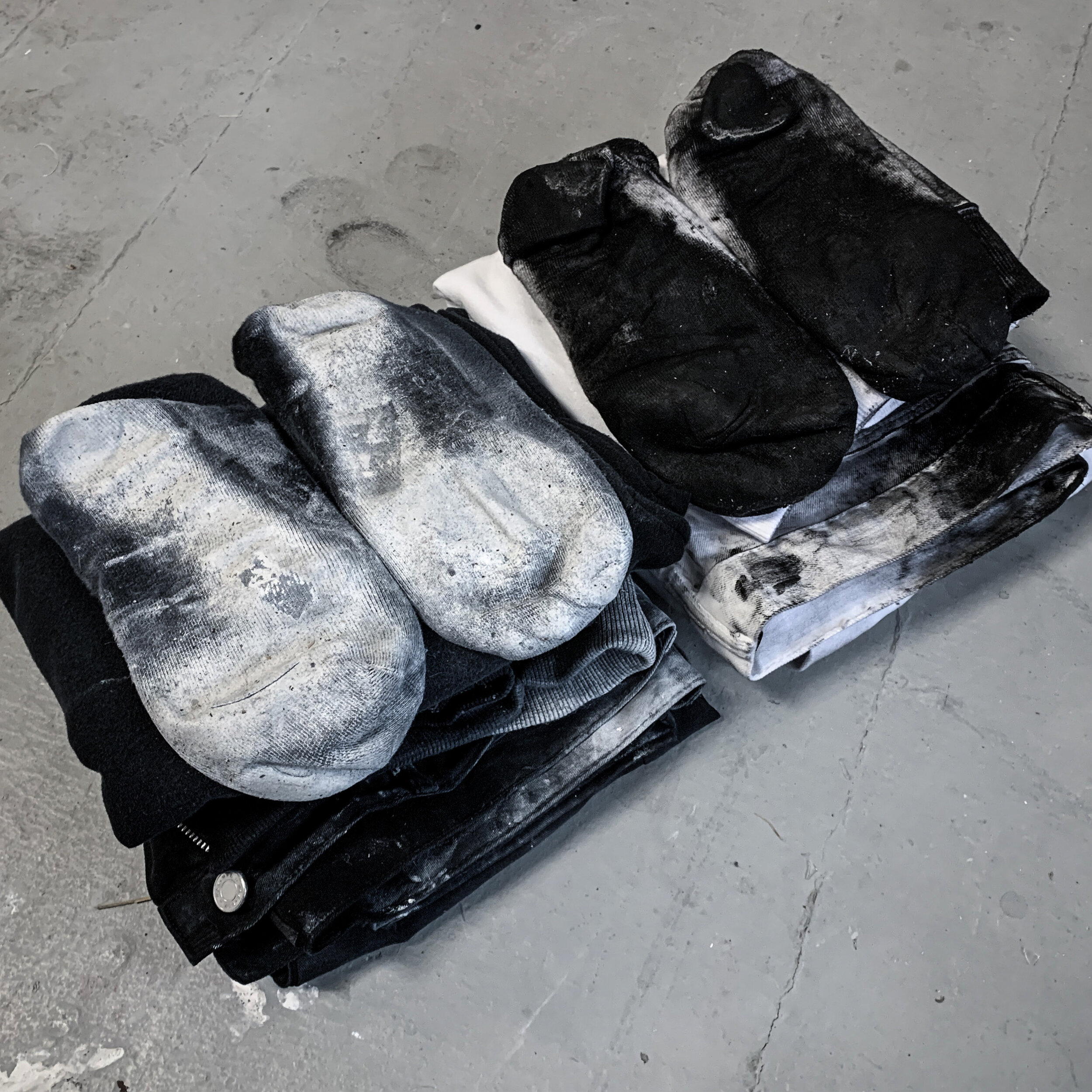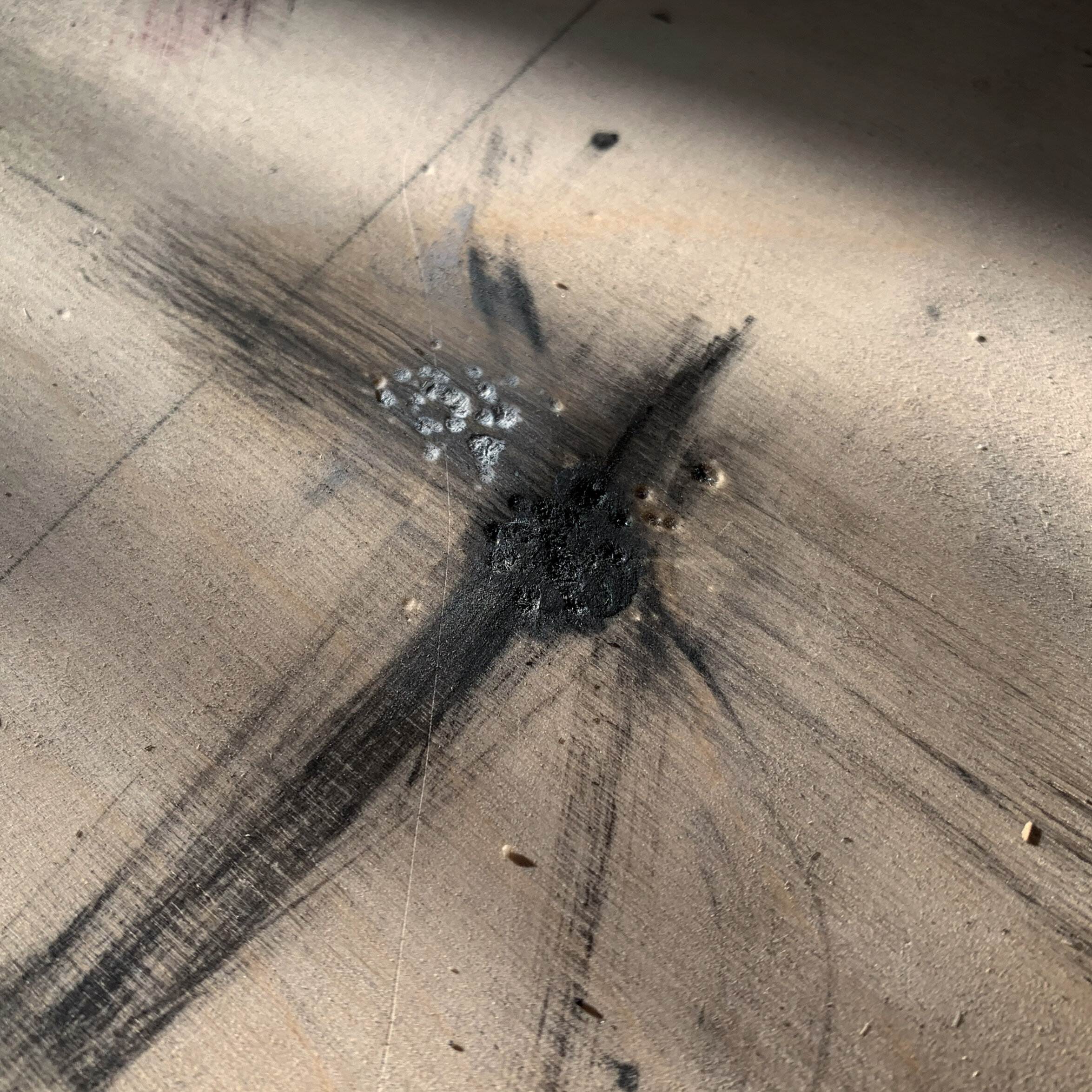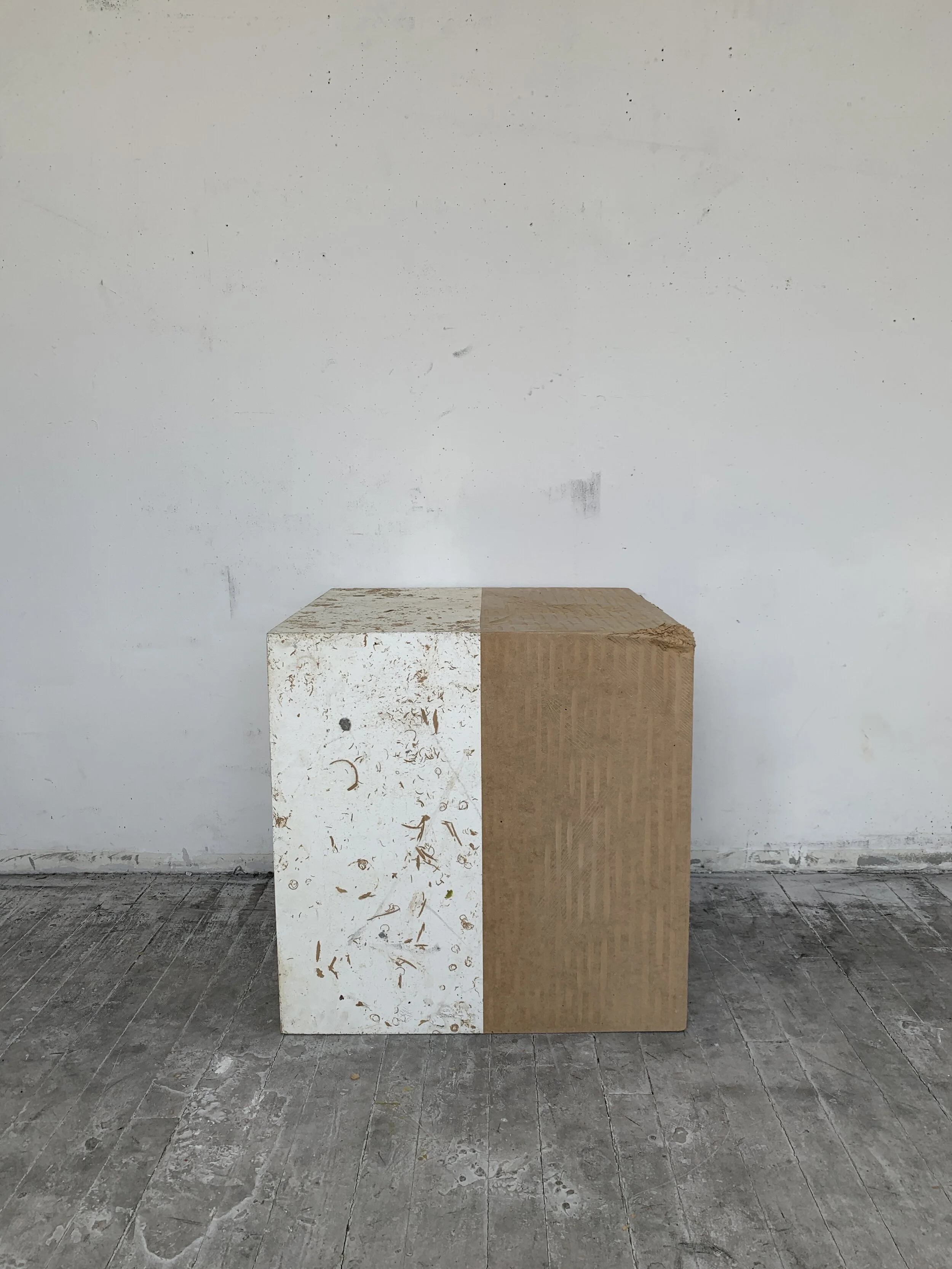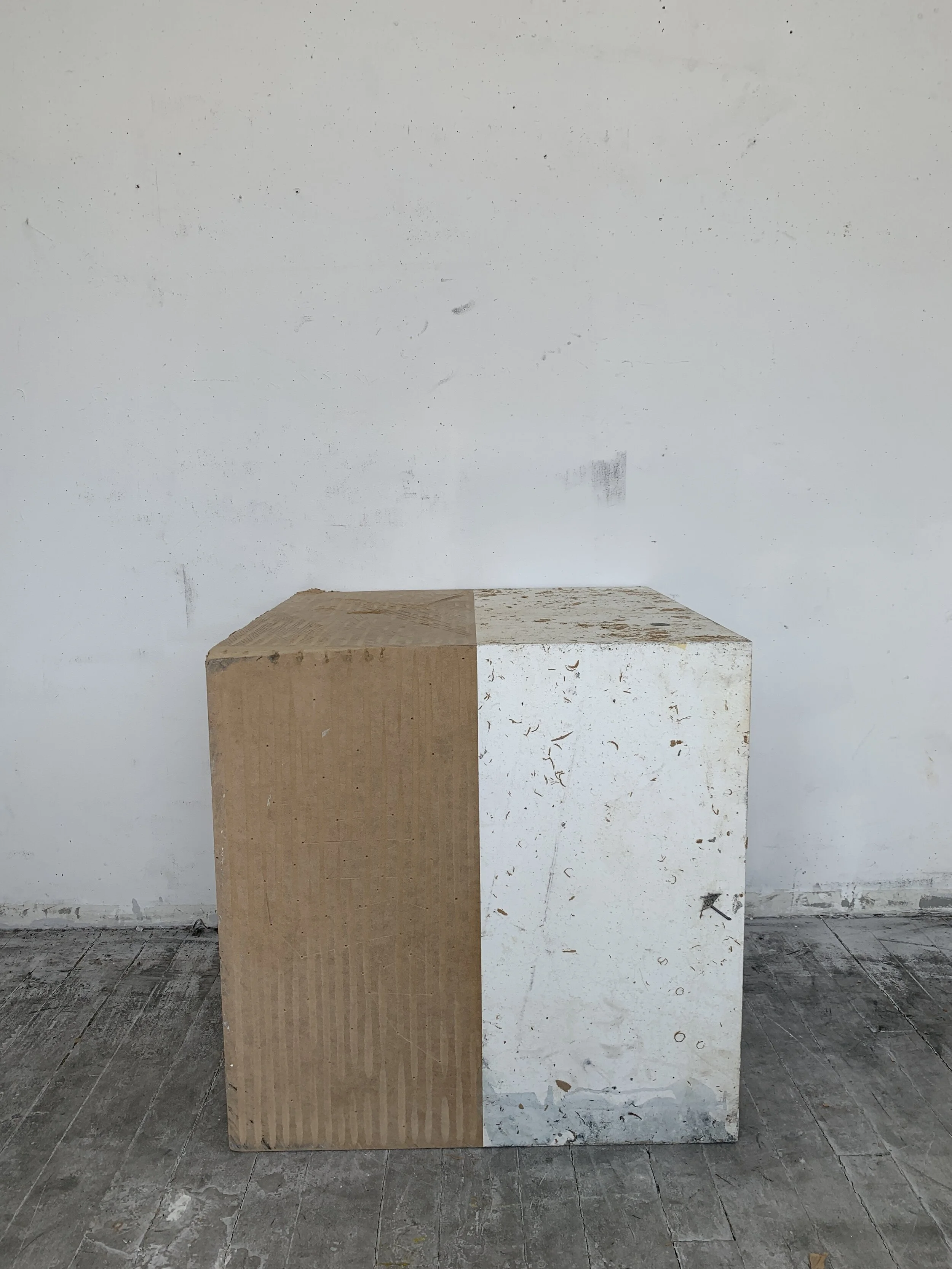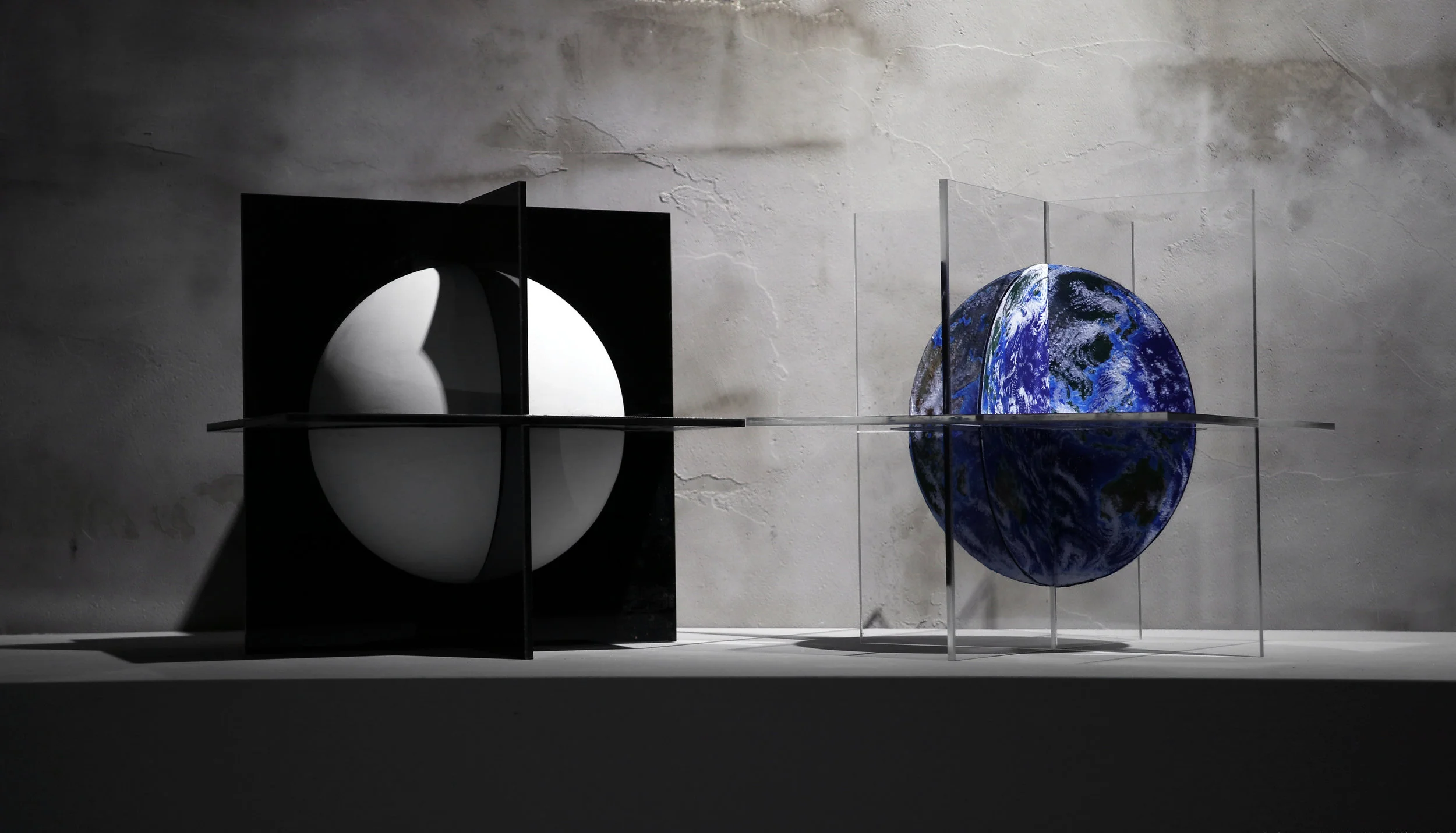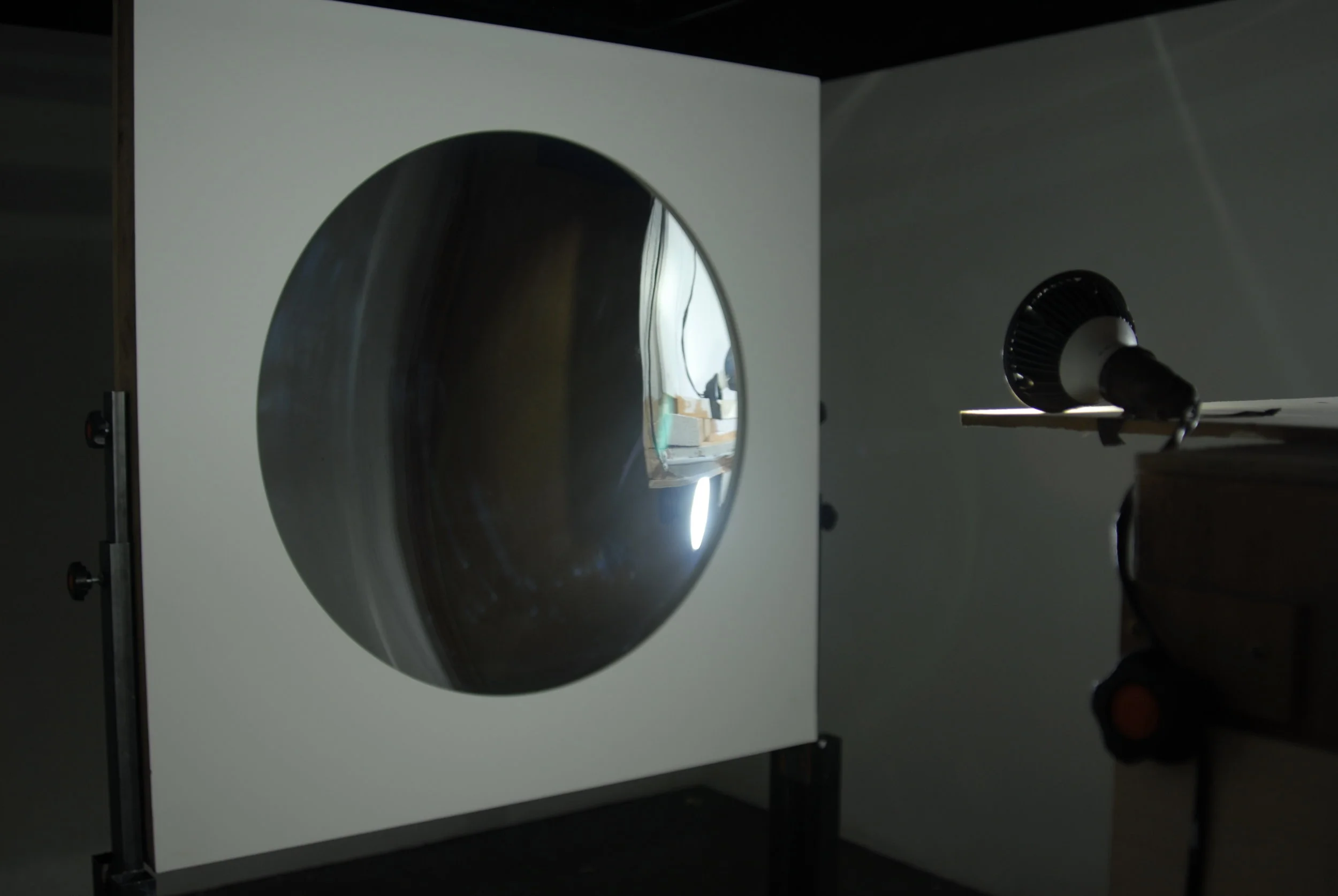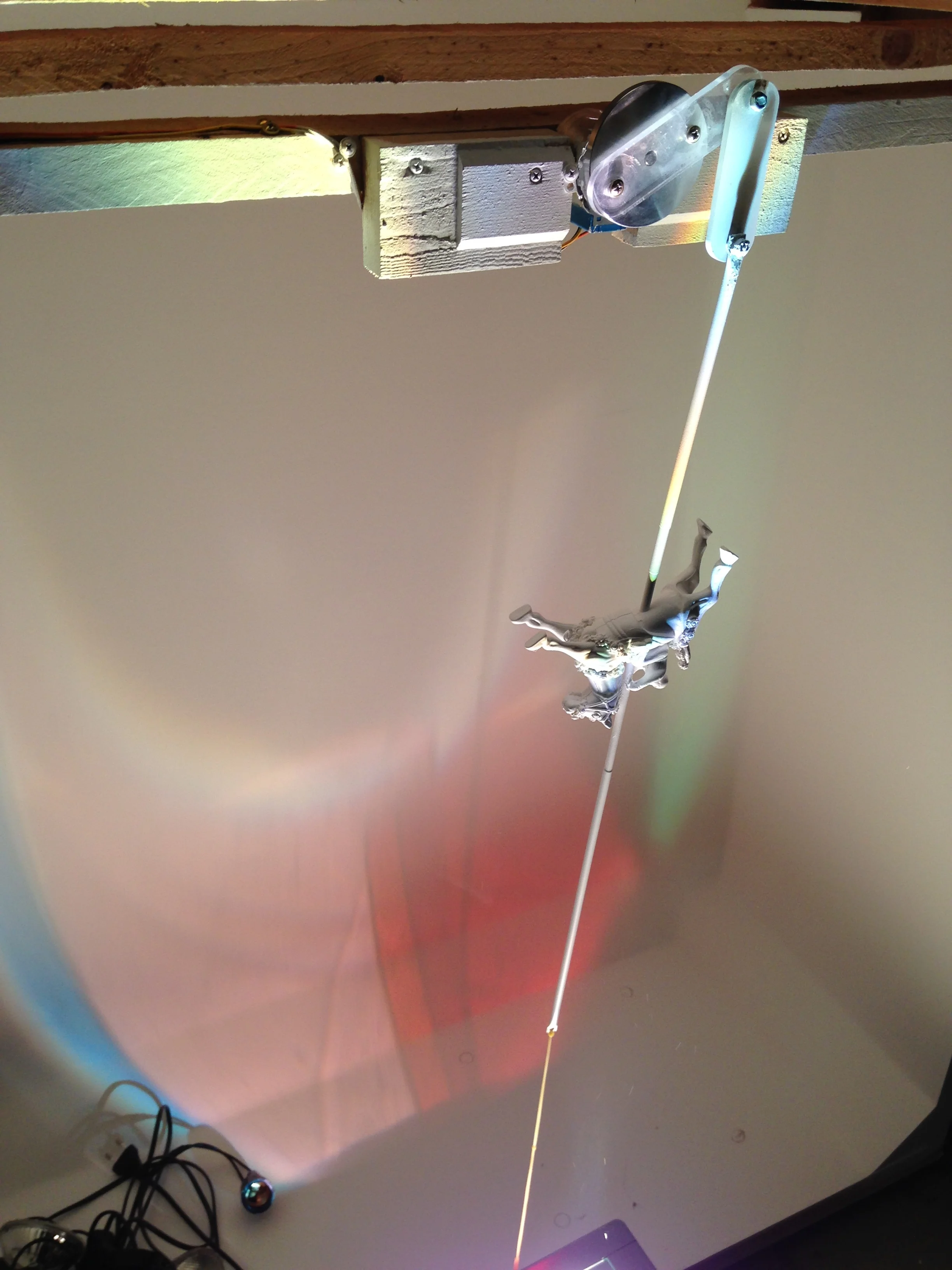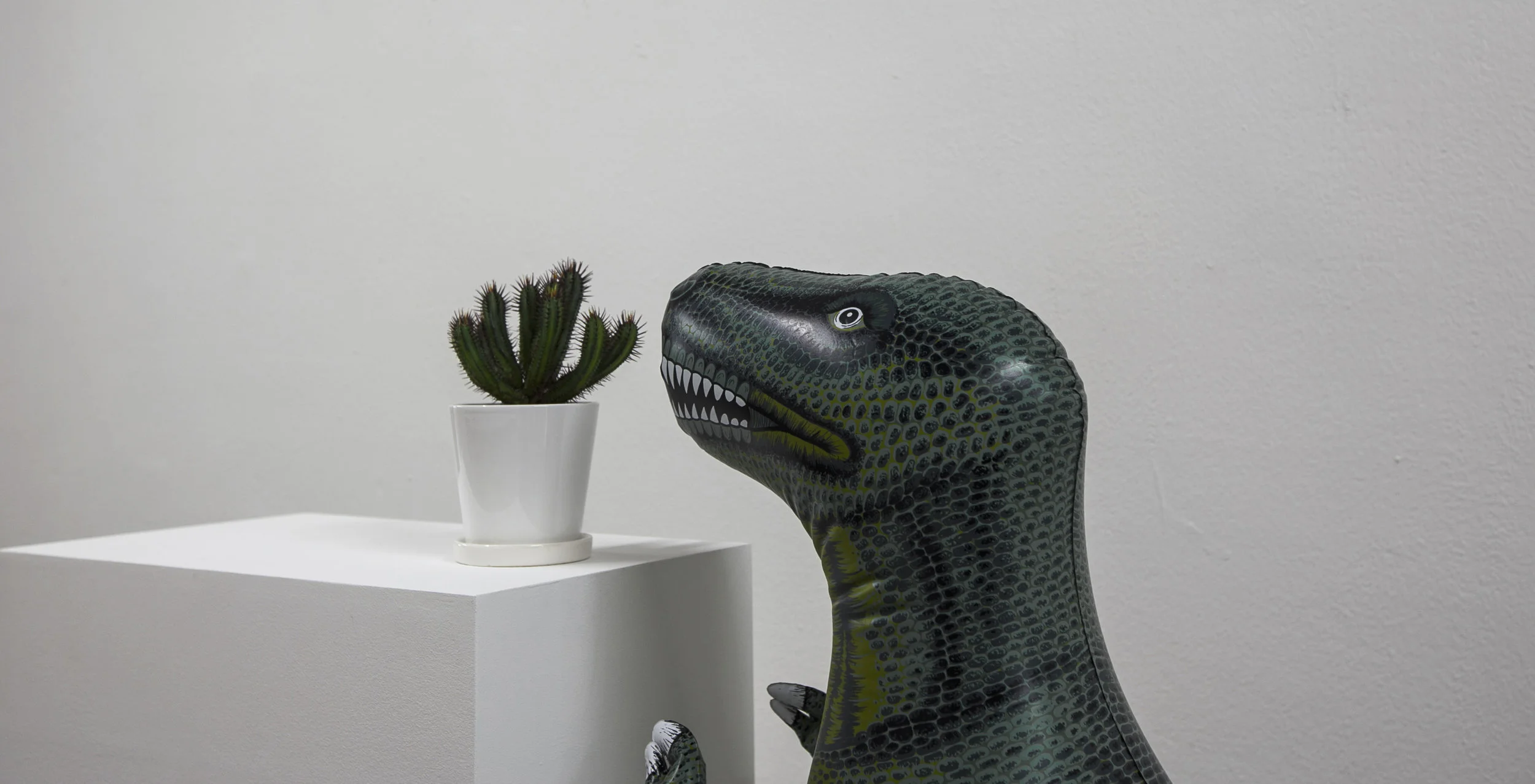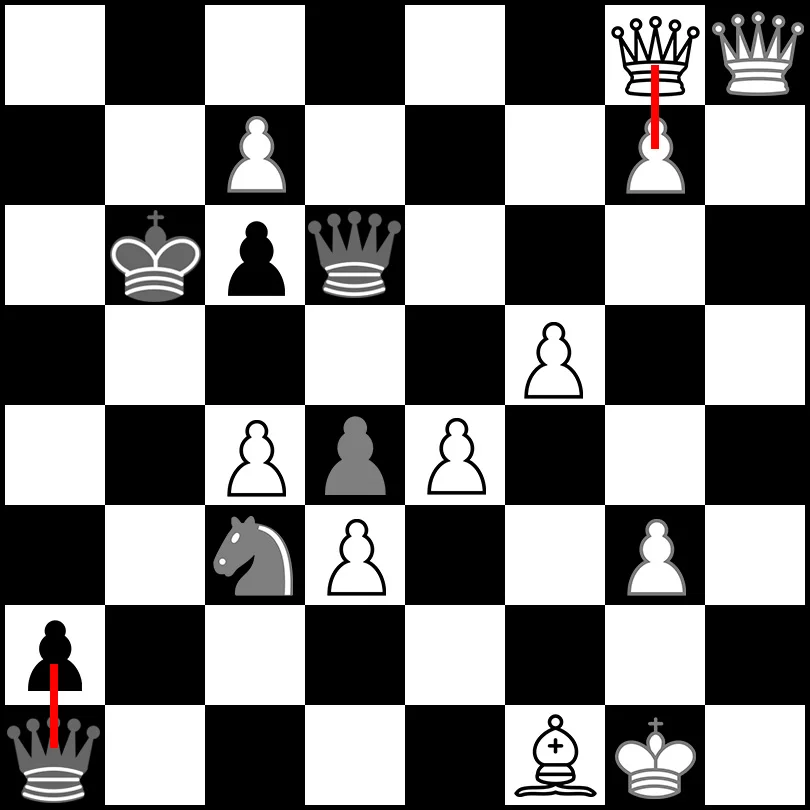107" x 107" per each, 2020
performative drawing with the artist height sized straightedge and compass, black and white oil pigment sticks on white and black seamless sheets
0. Convergence
https://youtu.be/SyQacM020vc
Given materials
A set of compass and straightedge tall as the performer’s height
12 black oil pigment sticks
A sheet of white paper
Formalities
0) The length of one side of the largest square drawn by the given straightedge shall be at least twice as long as the total length of the straightedge. This indicates a radius of the constructible circle shall be equal or shorter than the total length of the straightedge. 1) However, since the radius of the largest circle which the given compass can draw is smaller than the straightedge, just draw the largest circle with the compass. This circle is the starting point of this construction. 2) Draw a line from the imprinted mark at the center of the circle by the weight and rotatory power of the compass and a point on an arc of the drawn circle, and extend this line to the opposite side of the arc. 3) Set the compass on one end of the drawn line, and set its width beyond the center mark, and then draw two arcs respectively above and below the center point. Repeat it from the other end of the line. Place the straightedge through intersections of arcs and center point, and draw lines perpendicular to the previous line. 4) Draw lines between each of four points, and construct an inscribed square of the circle. 5) Set the compass on one vertex of the square, and set its width equal to the radius of the circle, and then draw two arcs respectively above(left) and below(right) the vertex. Repeat it from the other three. 6) Connect all four vertices and four intersections of arcs to create a circumscribed square. 7) Set the compass on the center point, and set its width narrower than the radius of the circle but widest within the circle. Repeat 2)~7). 7~n) Do not step outside the circle, and keep motions within the area of the circle.
Result
The construction ended in the moment when performer’s footsteps blackened the central area of the construction and further sequences were impossible to be processed with significant marks for consecutive constructions lost.
1. Divergence
https://youtu.be/_qhTcGODBBM
Given materials
A set of compass and straightedge the same length as the performer’s height
12 white oil pigment sticks
1 sheet of black paper
Formalities
0) The starting point of this construction, in principle, shall be a circle as small as a dot. Or at least the diameter of the circle shall be precisely as twice as diameter of the given oil pigment stick. 1) However, since the shortest width which the given compass presents is defined as the width of the compass in a fully folded state, just draw the smallest circle with the compass. This circle is the starting point of the construction. 2) Draw a line from one point on the arc of the circle through the imprinted mark at the center of the circle by the weight and rotatory force of the compass, extending the line to another point on the opposite side of the arc. 3) Set the compass on one end of the drawn line, and set its width equal to the radius of the circle, and then draw one arc larger than a semicircle through the previous circle. Repeat it at the opposite end of the line. 4) Set the compass on one end of the drawn line, and set its width beyond the center mark, and then draw two arcs respectively above and below the center point. Repeat it from the other end of the line. Draw a line through two intersections of arcs and the center point. 5) Draw lines between four intersections of arcs, and construct a circumscribed square of the circle. 6) Draw lines between each of four points on the arc of the circle, and construct an inscribed square of the circle. 7) Set the compass on the center point, and set its width wider than the radius of the circle but narrowest outside the circle. Repeat 2)~7). 7~n) Do not step within the construction, and keep motions outside the area of the circumscribed squares.
Result
The construction ended in the moment when the length of one side of the inscribed square became longer than the total length of the straightedge and further sequences were impossible to be processed with the largest inscribed square left unconstructed.









